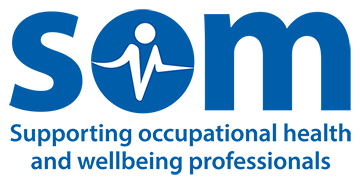SOM roundtable: Sleep and the workplace – November 2019
Sleep and fatigue in the workplace
The discussion was opened by Dr Karen Robertson. Dr Robertson pointed out that, although raising awareness of the need for an adequate amount of sleep is key, it should be acknowledged that not everyone requires the recommended 7-9 hours. PHE has produced a sleep and recovery toolkit for employers, but the challenges organisations face to put this into practice can be huge.
Shift work and long commutes mean that some employees don’t even have the required 11 hours away from work that would allow them to get 7-9 hours’ sleep. In the emergency services, employees can be told to work on rest days, and are sometimes required to work 24-hour shifts. There is no ‘clocking off’, and rotas are complex.
Commuting, particularly commuting home from the night shift, is a huge issue. 20-25% of road traffic accidents are fatigue related, and these types of accidents tend to be more devastating. 24-hour shift workers who have just come off shift have 55x the risk of having an accident than someone who has just got up.
Considering the dangers of lack of sleep, is there a way we can test for it? Dr David Flower explained that there are biomarkers, as for drug and alcohol testing, but there is a question over where you set ‘What’s fit/what isn’t/what’s enough/what isn’t’ parameters. Questionnaires were not seen as helpful, but self-assessment tests were considered of some use.
What is current good practice?
Christine Poulter opened a discussion about what was considered good practice. In terms of sleep policies, there is little publicly available. It was suggested that good practice would mean an element of choice for the employee.
Employees should be able to access occupational health (OH) or HR if they need to. Information, instruction and training are important. Are people being taught what good sleep hygiene is? No shift work is entirely safe, but 2 nights, 2 days, 4 off has been given the lowest risk factor (1) on the HSE website.
The workplace can be brightened at night to improve performance; however, this will shift circadian rhythm. This raises the issue of carcinogenicity – while increasing brightness may reduce operational risk, it may increase health risks such as cancer. The right balance needs to be struck between operational and health risks.
Dr Gervais noted that changing organisational and societal culture is central to the issue. It can’t be left to the employee alone; employers must ensure they’re putting things in place to prevent and manage fatigue. Dr Flower agreed that it is a public health issue and should be a shared responsibility between employee and employer. Employment constraints against rest should be changed (e.g. long commute), and the aim should be a just and right culture, not a culture of blame.
Facilitating collaboration
The roundtable ended with a discussion led by The Sleep Council’s Lisa Artis. Lisa referenced the Mental Health Ambassadors model, and asked if the same could be done for Sleep. It was agreed there is a lack of general sleep advice. Funding is currently focused on mental health, but sleep looks likely to be the next big area of concern. The link between sleep and mental health was noted, as well as the link between sleep and physical health. Indeed, sleep is often an indicator of people’s general state of health.
Some positive signs were identified: Sainsbury’s ongoing Living Well index survey asks respondents about sleep, and F1’s Toto Wolff has released a YouTube video about the connection between sleep and marginal gains (working against the stereotype of successful business leaders thriving on little sleep).
Reflections on taking this forward
It was agreed that a societal change of awareness is needed. The significance of the work and sleep interaction has not been acknowledged, and the message hasn’t reached employers. Australia is one country that is moving to legislate on sleep and work, but we are yet to see what will transpire there in terms of legislation and regulation.
The following next steps were proposed:
- SOM and Sleep Council develop a help sheet
- Approach PHE
- Advocacy – call for action - form steering group with regular teleconferences and commission a report on sleep and work.
Resources
- IOGP Publication - https://www.iogp.org/bookstore/product-category/health/ (Reports 626; 626-1; 626-2; 626-3)
- Royal College of Physicians article on fatigue and sleep - click here to view
- Sainsbury’s Living Well Index - https://www.about.sainsburys.co.uk/about-us/live-well-for-less/living-well-index
- Toto Wolff YouTube link - https://www.youtube.com/watch?v=2reqUtOHhY0
Participants were Dr Alec Dobson, and Dr Greg Harries, from the Met Police; Emma Mamo, Head of Workplace Wellbeing at Mind; Dr David Flower, Occupational Physician; Pippa Dolman, Occupational Health Manager at B&CE; Dr Roxane Gervais, Occupational Psychologist; Heike Grimm, Occupational Health and Wellbeing Manager at Multiplex; Dr Karen Robertson, QinetiQ; Dr Robert Orford from the Mayo Clinic; SOM Honorary Strategic Clinical Advisor Christine Poulter; Nick Pahl, CEO of SOM, and Lisa Artis, Head of The Sleep Council.

